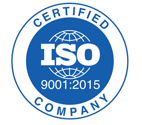The pharmaceutical and biotech industries operate under intense regulatory scrutiny, with the U.S. Food and Drug Administration (FDA) ensuring compliance with Current Good Manufacturing Practices (cGMPs) and other regulatory requirements. FDA inspections serve as a mechanism to verify that companies adhere to these standards, and failing an inspection can have serious repercussions.
Noncompliance can lead to Form 483 observations, warning letters, import bans, product recalls, and legal action, all of which can negatively impact business operations, reputation, and financial performance. To prevent these issues, companies must implement robust compliance strategies that focus on quality systems, data integrity, supplier oversight, risk management, and employee training.
Key Strategies to Avoid FDA Inspection Findings
1. Establish and Maintain a Robust Quality Management System (QMS)
A well-structured Quality Management System (QMS) is the foundation of compliance and should align with regulatory requirements such as 21 CFR Parts 210 and 211 for pharmaceutical manufacturers and 21 CFR Part 600 for biologics.
Key elements of an effective QMS include:
- Comprehensive Standard Operating Procedures (SOPs) covering manufacturing, testing, storage, distribution, and handling of deviations.
- Rigorous batch record documentation to ensure full traceability of every product.
- Change control procedures that assess the impact of modifications on product quality and regulatory compliance.
- Ongoing internal audits to proactively identify and correct compliance gaps.
FDA inspectors often focus on the consistency and execution of quality systems, so ensuring that all processes are well-documented and followed is critical.
2. Ensure Data Integrity and Compliance with 21 CFR Part 11
The FDA has significantly increased its focus on data integrity violations in recent years, particularly in laboratories and manufacturing environments. Ensuring compliance with 21 CFR Part 11—which governs electronic records and signatures—is critical for avoiding regulatory findings.
Best practices for data integrity compliance include:
- Securing electronic systems with appropriate access controls, audit trails, and system validations.
- Implementing good documentation practices (GDPs) to ensure that records are accurate, complete, and not subject to manipulation.
- Routine data integrity audits to identify gaps and implement corrective actions before FDA inspections.
Data integrity issues, such as missing records, backdated data entries, or falsified results, are common reasons for FDA warning letters and import alerts.
3. Strengthen Supplier and Raw Material Controls
Pharmaceutical and biotech companies often rely on third-party suppliers for raw materials, active pharmaceutical ingredients (APIs), and contract manufacturing. The FDA expects companies to demonstrate control over their supply chains to prevent contamination, adulteration, or substandard products.
To maintain compliance:
- Conduct thorough supplier qualification audits to verify adherence to cGMP requirements.
- Implement quality agreements that outline compliance expectations and define responsibilities.
- Perform comprehensive incoming raw material testing to ensure materials meet quality and safety standards.
Failure to properly oversee suppliers can result in product recalls, warning letters, and supply chain disruptions.
4. Implement a Robust Corrective and Preventive Action (CAPA) System
A Corrective and Preventive Action (CAPA) system is essential for identifying, investigating, and resolving compliance issues before they escalate into serious FDA findings.
Key CAPA components include:
- Thorough root cause analysis to determine why deviations or nonconformances occur.
- Well-documented corrective actions to address issues and prevent recurrence.
- Regular trending and monitoring of deviations, complaints, and out-of-specification (OOS) results to identify systemic problems.
FDA inspectors often assess whether CAPA investigations are comprehensive, timely, and effective. Deficiencies in CAPA implementation are among the most frequently cited violations during inspections.
5. Prioritize Employee Training and Competency Development
Employees must be properly trained on cGMP regulations, SOPs, data integrity, and quality control procedures. Inadequate training often leads to compliance errors and increases the likelihood of receiving Form 483 observations.
To strengthen training programs:
- Provide ongoing, role-specific training to ensure employees stay current with regulatory expectations.
- Maintain detailed training records that document employee competency assessments.
- Conduct mock FDA inspections and regulatory scenario training to prepare employees for real audit situations.
An untrained workforce can lead to missteps in handling deviations, documentation errors, and poor responses to FDA inspectors.
6. Maintain Environmental Monitoring and Contamination Control Programs
For manufacturers of sterile drug products, biologics, and injectables, contamination control is a top FDA priority. Companies must maintain a validated environmental monitoring program that includes:
- Routine microbial and particulate monitoring of cleanroom environments.
- Stringent aseptic processing controls to minimize contamination risks.
- Validation of sterilization methods for equipment and manufacturing areas.
Failures in environmental controls have led to product recalls, consent decrees, and even facility shutdowns.
7. Conduct Internal Audits and Mock FDA Inspections
Internal audits should not be treated as a box-checking exercise. Instead, they should be thorough and proactive, simulating real FDA inspections.
Best practices include:
- Conducting risk-based audits to focus on high-priority compliance areas.
- Training employees on responding to inspector questions in a clear and concise manner.
- Ensuring proper documentation management so that records are readily available upon request.
Companies that prepare for inspections proactively are far less likely to receive negative findings.
The Consequences of Noncompliance
Failure to comply with FDA regulations can result in severe consequences, including:
1. FDA Form 483 Observations
Issued when FDA inspectors identify noncompliance. Companies must respond with corrective actions, or risk escalation.
2. Warning Letters
Publicly issued letters indicating serious regulatory violations. Failure to address a warning letter can lead to further enforcement actions.
3. Import Bans and Product Seizures
Noncompliant companies may face import alerts, restricting their ability to sell products in the U.S. The FDA can also seize products deemed unsafe.
4. Product Recalls
If a drug or biologic poses safety risks, the FDA may require a recall, which can result in significant financial losses and reputational damage.
5. Civil and Criminal Penalties
Severe violations may lead to civil monetary penalties, consent decrees, and even criminal prosecution for responsible executives.
Conclusion
Compliance with FDA regulations is not just about passing inspections—it is critical for patient safety, product integrity, and business sustainability. Companies that prioritize quality, maintain strong data integrity, control their supply chains, and prepare for inspections can avoid costly regulatory findings and ensure long-term success.
By taking proactive steps today, pharmaceutical and biotech companies can reduce compliance risks, protect their reputation, and maintain seamless market access.
Need help strengthening your regulatory compliance strategy? PRP Compliance can support your quality and regulatory initiatives—contact us today to learn how we can help.



